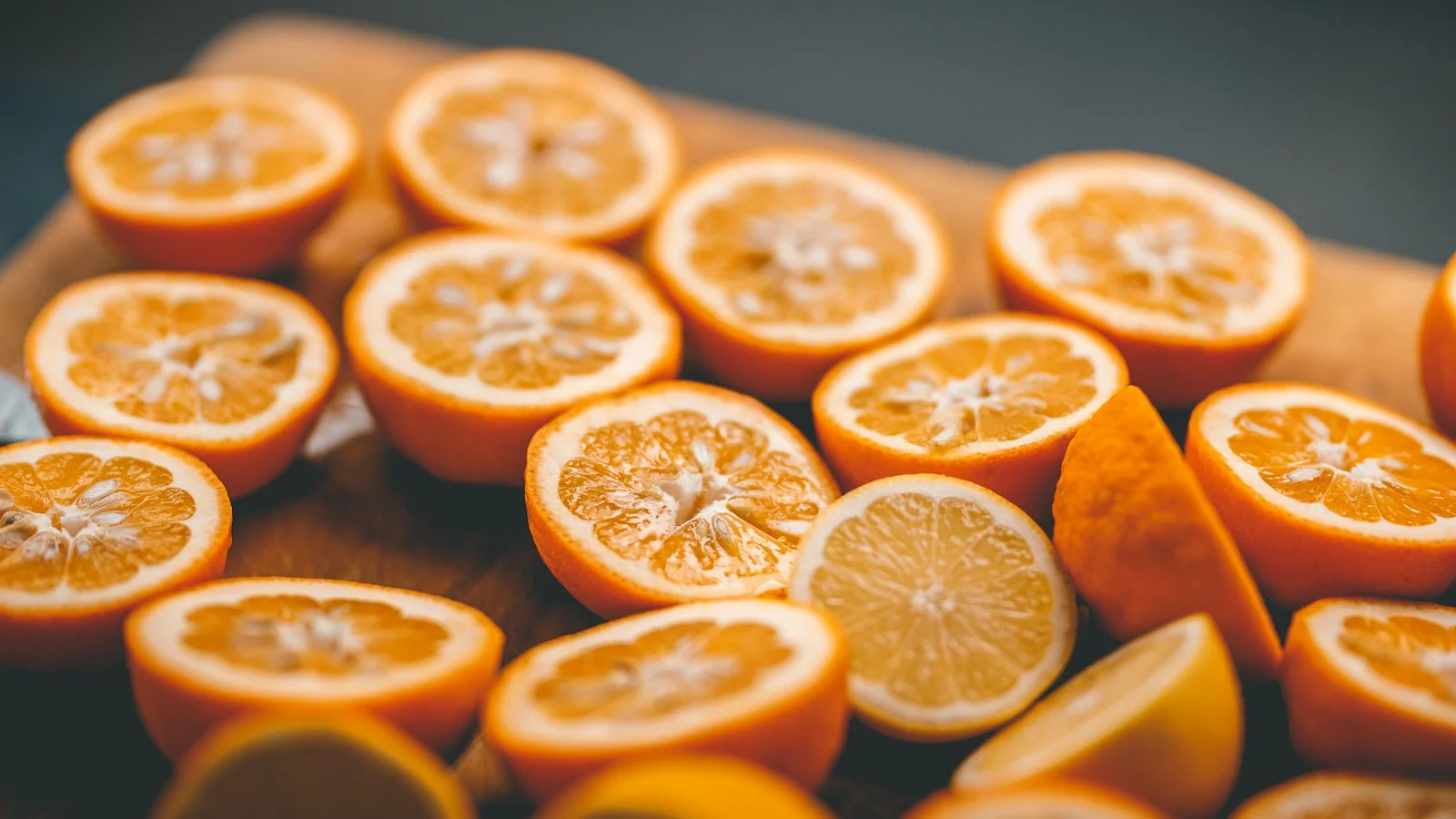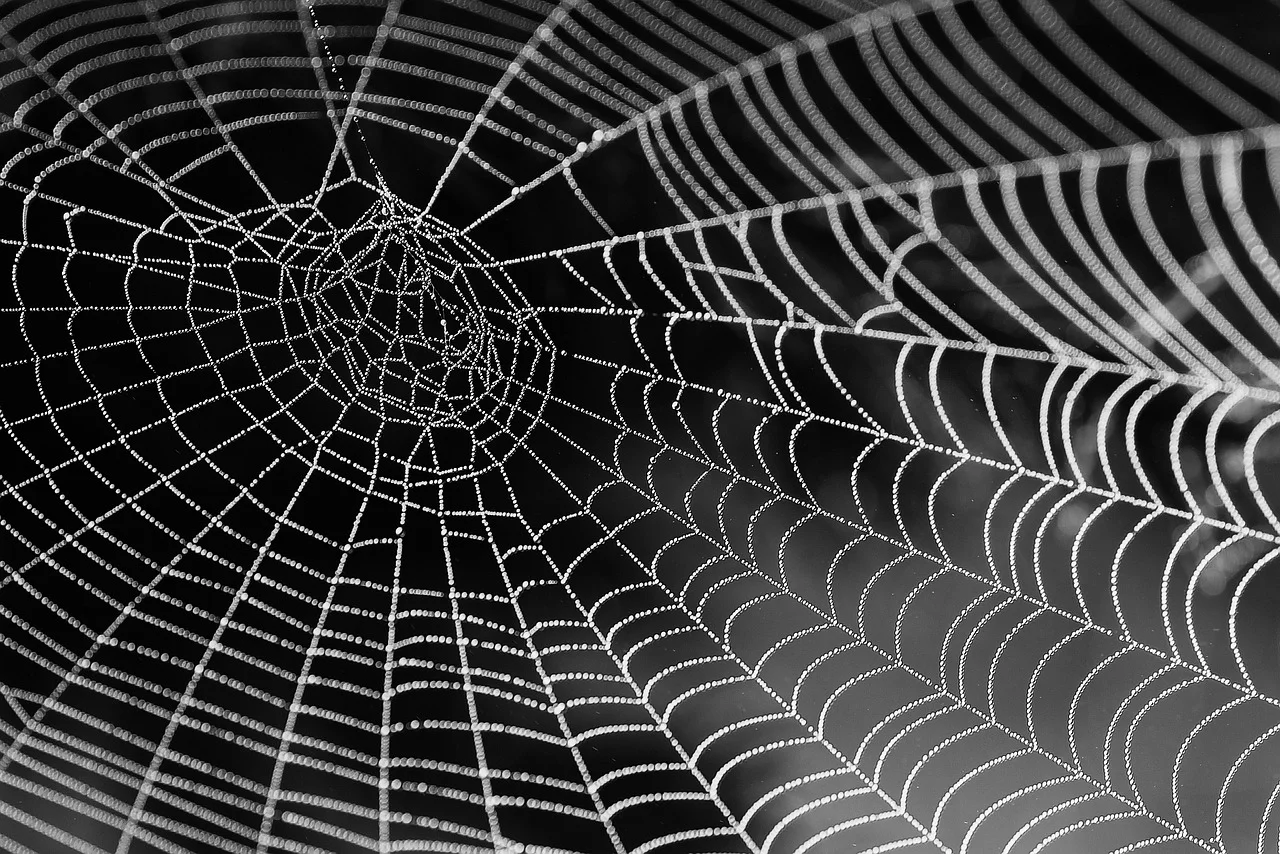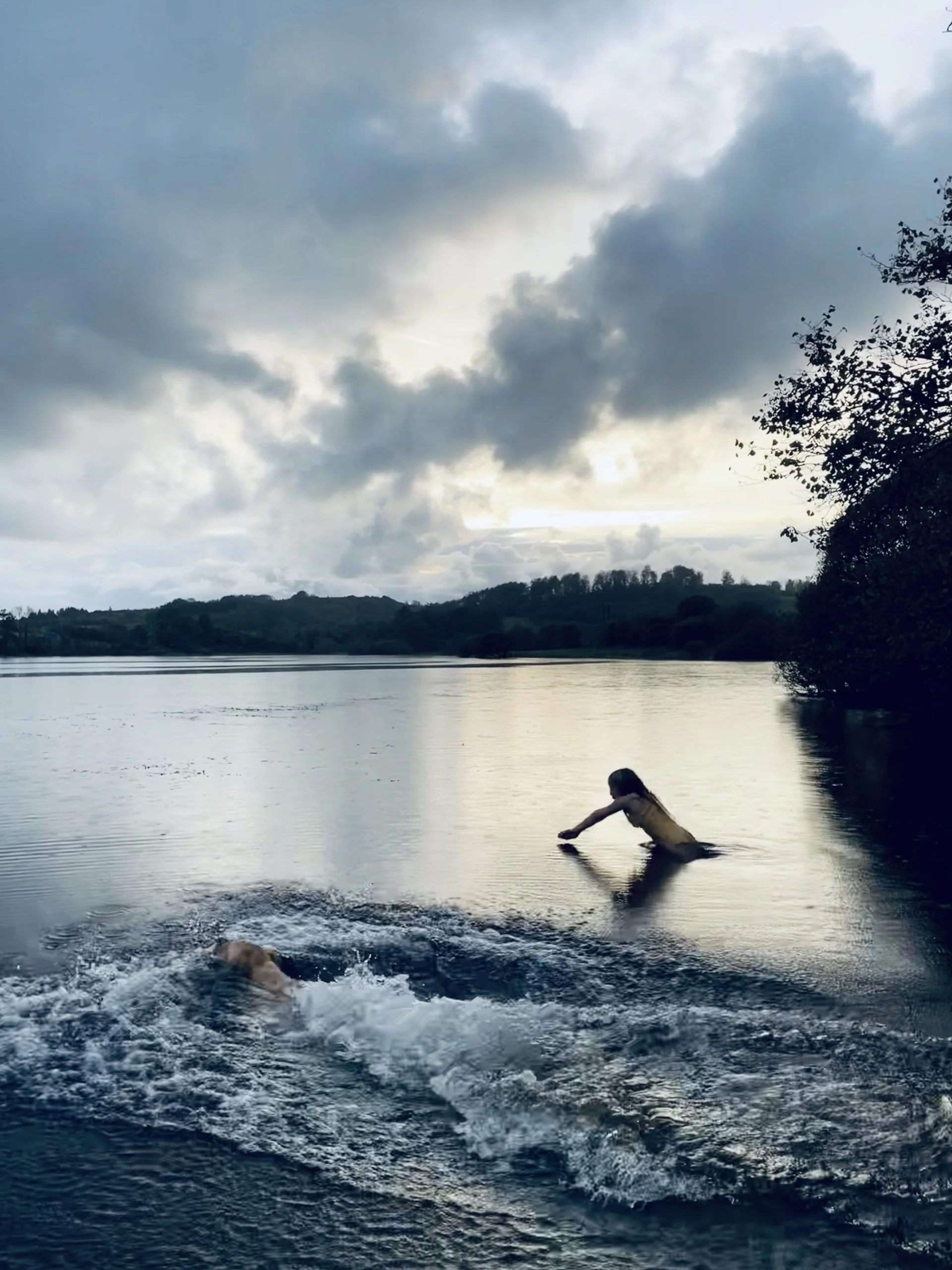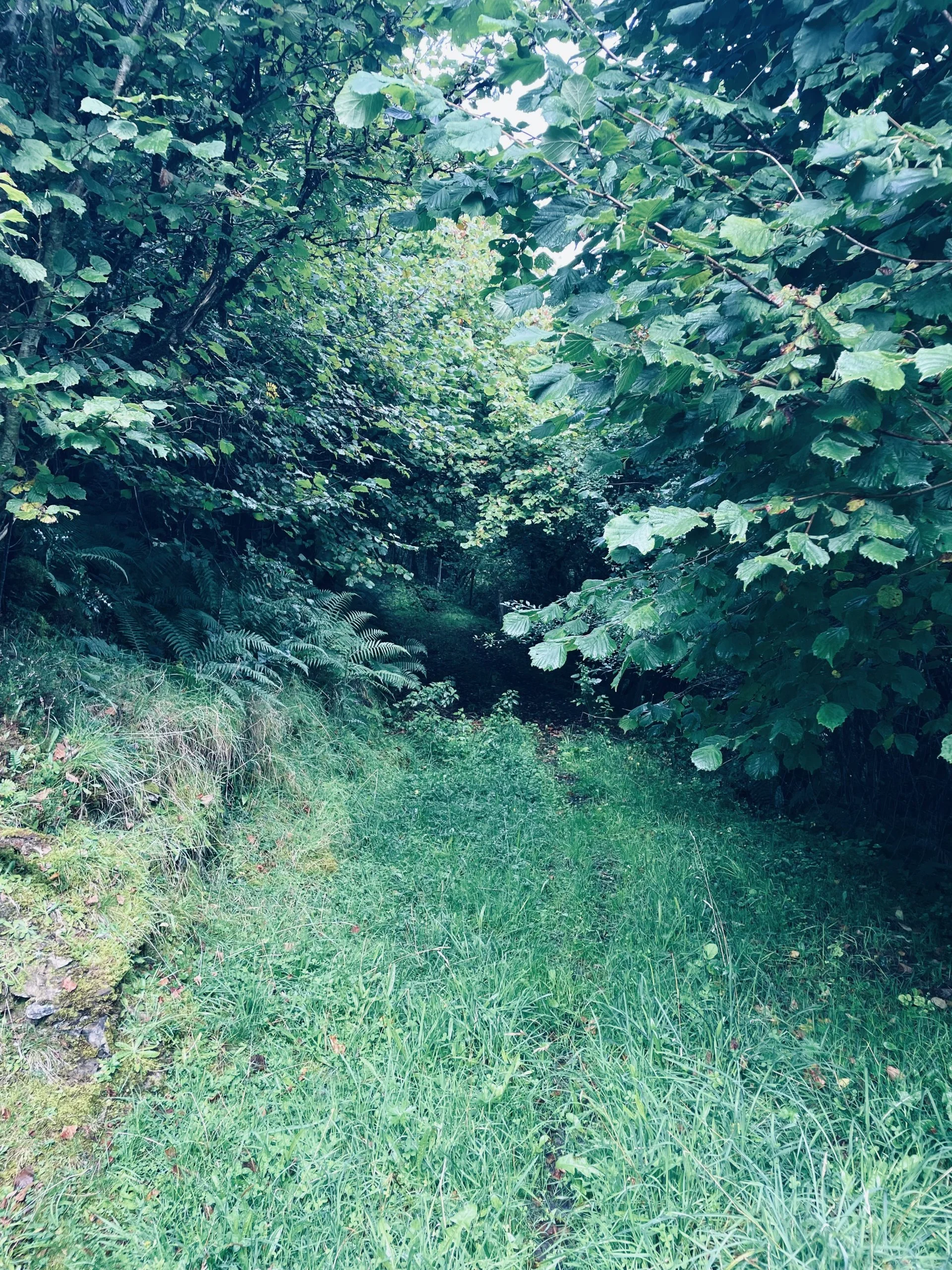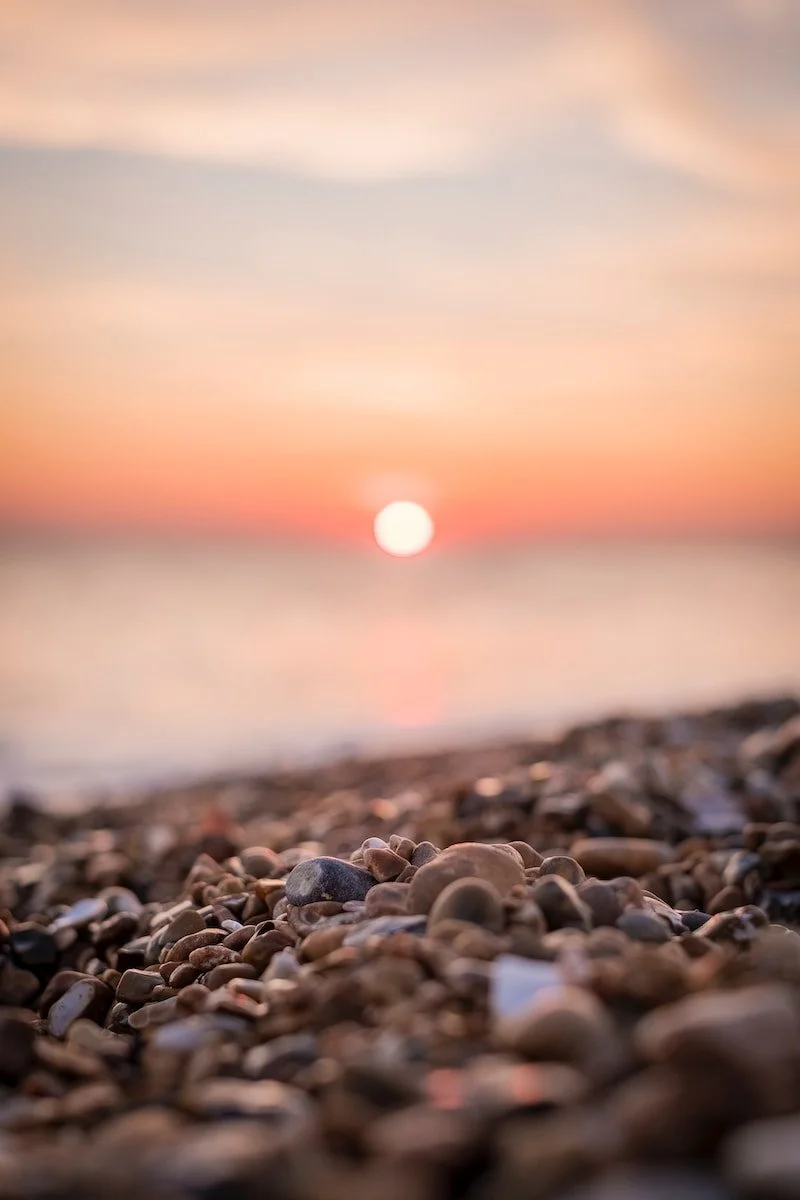Let’s Talk Turkey
Upstream
Upstream is an offering of essays that map the landscape as I see it. Subscribers get full access to my work. If you are already a member, please login below.
If you are not currently a member but would like to join, please click here.
My grandmother-in-law, Granny Speers, was a formidable woman. She was twice widowed and raised seven children in a small farmhouse outside Armagh. With so many mouths to feed, she found ways to make ends meet, from accommodating evacuees during the war to raising turkeys for Christmas. When our family gathers, stories of this marvellous matriarch bubble over: ‘Remember when Granny sliced her thumb off with the bone-handled knife? What about the time she did away with the neighbour’s cat?’
Granny was the keeper of the local stag, the turkey-about-town, if you will. He was a huge bird with pink caruncle, pitch black plumage and an impressive fan of tail feathers. Locals came from across the countryside with their hen turkeys in tow. My grandmother-in-law was not one for taking chances. She stretched a length of yarn across the hen’s neck and pegged the string to the ground at each end. When the stag had tramped its mate, the hen was released to its owner.
Turkey Bondage
Is that too much information? I would pause here to mention that today’s intensively raised turkeys are unable to perform basic copulation because genetic modification creates bigger, ungainly birds. Most turkeys are now artificially inseminated. Old fashioned turkey bondage was at least a step more natural than that.
Granny took great care over her turkey eggs. She tucked them in beside the boiler and turned them every day. Her livelihood depended on raising Christmas turkeys for families in the local area. The main difference between the turkeys she provided and the ones available from our local farms was that hers were still gobbling when they were sold. In December, neighbours arrived at the homestead and were directed to pick-their-own turkey from the byre. The killing and plucking of the birds were the responsibility of those who intended to eat them. I floated this idea to my sister who cooked our turkey this year, but she said it was enough that we wanted her to include the bird’s heart in her make-ahead gravy.
A dear friend, after reading my previous post on raising and butchering our own pork, called us hypocrites. We talked about holding the tension between loving and eating our animals. I am grateful for these robust conversations about how we can remain connected to the food we eat. There are no easy answers.

Right to Roam
Of all the animals we have had on our smallholding, the turkeys won me over. We bought pullets from Milly’s Farm in Waringstown where their turkeys have the right to roam an orchard.
They came to us as soon as they were off the heat lamps then spent the rest of the year following me around the garden. There was something quite magpie about them; they loved anything bright and shiny. When I dug in the vegetable patch, they were more interested in the metal hand trowel than any worms in the soil. When friends came to sit around the fire pit, the turkeys followed our voices and appeared beside us, pecking at shoelaces, coat zips and even the diamonds in my engagement ring. I liked them a lot. The sound they made was more plaintive than a gobble. It reminded me of having a toddler at my heels, chattering in gibberish, and getting under my feet.
Of the 11 million turkeys slaughtered last month in the UK, most of them were not actually turkeys. What I mean is that they were raised in overcrowded barns where they could not behave like turkeys. There were one or two evenings when I was home after dark and found our turkeys roosting in the top branches of the blackthorn tree. On the nights I did close them in, the four of them flapped into a high windowsill to sleep. Turkeys like to perch. Like their wild ancestors, they cannot see well in the dark and this keeps them safe from predators. They also love to forage: seeds, insects, windfall apples and the emerging tips of next year’s garlic.
Narrowing the Gap
When turkeys are reared intensively, they cannot roost, and they do not forage. In fact, many have their beaks trimmed to prevent them feasting on one another (beak trimming is now illegal in several European countries). The area these turkeys roam is the size of a double page broadsheet newspaper. Even the bar for ‘free range’ birds is sadly very low. It can refer to a small door where turkeys can access the outdoors, but few have the inclination to do so. When I think of these huge barns with little natural light and no wing space for the turkeys, it seems so far from the neighbour taking charge of his turkey while it lives and breathes in a farmyard.

Our attempt to narrow that gap means raising our own Christmas dinner. Some years it is geese, this year it was turkeys. We raised one for us and a few for close friends and family. Dispatching the birds was quick with minimal fuss. It was a time of gravity and celebration, and we were as precise in naming our emotions as we were with the blade: sorrow, gratitude, satisfaction, loss and pride. The children were involved in every part of the process except the moment of dispatch. They are keen to learn that part too, but we want to wait until they are a little older.
Gut Your Own
Although we did not hand the birds over alive, we did ask that friends pluck and gut their own. As we worked, we learnt how many feathers to pull at once without tearing the skin, the benefit of sitting down to pluck and using an adjustable winch to lower and lift the long turkey torso. The kids found the preening glands that produce oil to waterproof the birds’ feathers and I discovered how essential pliers were for the tougher quills.

After processing a small raffle of turkeys, I have a lot of respect for turkey farmers. The hardest work is done in the cold, dark winter and there is no quick way to pluck a bird. The price of grain more than doubled last year and with Russia and the Ukraine accounting for more than 30% of the global wheat crop, the situation remains unstable. It is also increasingly difficult to find willing labourers at plucking time. We resort to bribery in the form of hot whisky, a method that would not replicate well on a larger scale!
Lights Out
When Sam was a boy, he helped his aunt and uncle with their turkey business. He woke early, pulled on his jeans, stiff from the previous days dried blood, and lined up with his cousins in the shed. Sam’s job was to check whether the lights were out (lights are lungs in butcher talk because they weigh the least of all organs). This required his small hand to feel inside the ribs to ensure they had not been forgotten.
He remembers the birds hanging from the rafters with bailer twine, stone cold with placards around their necks. The names of the turkey recipients were written in pencil along with the weight of the bird in pounds. We hung our own birds in the barn beside our air-dried hams. The bones of our smallholding date back almost a hundred years and I wondered if turkeys had hung here before.
Our bird weighed 11 pounds and fed as many people on Christmas Day. It was a smaller, muscular turkey that had run at speed across the garden in pursuit of my six-year-old. The meat was fattier from deposits laid down during the cold, winter months. This meant a firm, moist turkey that fed a crowd with a wee bit left over. At the dinner table, we raised a glass to my sister who cooked it to perfection and to us for rearing, killing, and butchering the bird.
Food Reclamation
As we tucked into home-reared ham and turkey I felt such satisfaction for the 14 years of learning we have gathered. Much like digging for treasure then reassembling it with modern day adhesive, we have unearthed stories and traditions then tried to work them into our current context. I will not call it farming, food reclamation is a more fitting term for this journey.
I also cannot ignore the privilege inherent in how we live. If something went wrong with our turkeys, we could have purchased one for Christmas Day. When our ventures fail (as they so often do) they are on such a small scale that we lose little more than our pride. An unseasonably warm autumn last year meant our chorizo rotted. We struggled with the waste of our time and resources, but we are not dependent on its success for our survival. We are tinkering at the edges of a life granny toiled hard to build. That said, we work tirelessly to live in accordance with the things we believe. We want connection with the land, its stories, our food and the people with whom we feast.

Why do we do it?
Why am I drawn to detail death on our smallholding? Because I want to tell the whole story, guts and all. Because it drives me crazy that slaughtering our own animals is considered ‘weird’ and mass-produced meat is not. Because in these stories there is historical context from which we might glean wisdom. Because of the connection it builds to the people from whom we have inherited this love of livestock and the community who are journeying with us.
Mostly, though, I want to share the stories of our imagination. The poet RM Rilke writes: ‘More and more the things we could experience are lost to us, banished by our failure to imagine them.’
When confronted by systems with which we fundamentally disagree, and there are many, Sam and I take a deep breath then attempt to re-imagine our reality.
Reimagination
This act of re-imagination always leads us to uncharted territory and requires deep conviction. It is also impossible to do alone; it involves the support and guidance of our extended family, friends and smallholding enthusiasts. The issue itself is irrelevant; we are all convicted about different things. The ability to imagine something more meaningful and authentic, however, is open to us all.

When my mother-in-law was a little girl, granny asked her to take a turkey down the road to their neighbour. She grabbed it by the feet and hopped on her bicycle. Halfway down the lane, the turkey twisted to look at her, and my mother-in-law abandoned both bird and bicycle in the ditch. I think of this child clutching a full-sized turkey by the ankles and I see myself in her. I am teetering from the weight of the things I want to carry and there is no map except the one I make for myself. Like her, I found the courage I need for my journey. May you find the stories that will inspire courage for your own.
Latest Publications
Search Site
related journal entries
People With Whom I Have Worked








